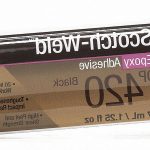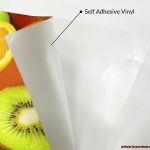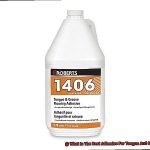Ceramics are the unsung heroes of our households, adding a touch of elegance and functionality to our daily lives. From coffee mugs to decorative vases, these delicate items can bring joy and beauty to any room. However, accidents do happen, and when they do, it’s heart-wrenching to see your beloved ceramics shatter into pieces.
But don’t fret. With the right epoxy glue, you can mend your broken ceramics back together like new. However, not all epoxy glues are created equal. Choosing the wrong one could leave your repair job in shambles.
That’s why we’re here to help. In this post, we’ll guide you through the different types of epoxy glue available and what factors you need to consider before making a purchase. We’ll also provide tips on how to prepare your ceramics for gluing and the proper procedure for applying the epoxy glue.
Whether you’re a DIY enthusiast or a professional ceramic restorer, this post will equip you with everything you need to know about repairing broken ceramics with ease. So if you’ve ever wondered what is the best epoxy to glue ceramics, keep reading. We’ve got you covered.
Different Types of Epoxies
Contents
- 1 Different Types of Epoxies
- 2 Factors to Consider When Choosing an Epoxy for Glue Ceramics
- 3 Benefits of Using High-Strength Epoxy for Glue Ceramics
- 4 Preparing the Surface Before Applying the Epoxy
- 5 Mixing and Applying the Epoxy Adhesive
- 6 Curing and Drying Time of the Epoxy Adhesive
- 7 Troubleshooting Common Issues with Glue Ceramics
- 8 Conclusion
When it comes to bonding ceramics, epoxy is a popular choice due to its strength and durability. However, not all epoxies are created equal. There are various types of epoxies available, each with unique properties and characteristics that make them suitable for specific applications. In this article, we’ll take a closer look at the different types of epoxies and how they vary in their properties.
Standard Two-Part Epoxy
The standard two-part epoxy is the most commonly used type of epoxy for bonding ceramics. It consists of a resin and hardener that must be mixed together before use. This type of epoxy is known for its high bonding strength and versatility, making it suitable for bonding a variety of materials, including ceramics.
Fast-Setting Epoxy
Fast-setting epoxies set quickly, usually within 5-10 minutes. They are ideal for small bonding jobs or materials that require a short clamp time. However, they may not have the same bonding strength as the standard two-part epoxy.
Specialized Epoxies for Ceramics
Specialized epoxies designed specifically for ceramics contain fillers such as ceramic powder or glass beads to enhance their adhesion to ceramics. They may also have a longer working time, allowing for more intricate repairs or constructions.
Clear Epoxy
Clear epoxies dry clear, making them an excellent choice for bonding ceramics where appearance is important. They are also resistant to yellowing and are ideal for use in areas where UV exposure may cause discoloration.
High-Temperature Epoxy
High-temperature epoxies are designed to withstand high temperatures without losing their bonding strength. They can withstand temperatures up to 300°F and are ideal for bonding ceramics that will be exposed to high heat, such as ovenware or ceramic heaters.
Conductive Epoxy
Conductive epoxies contain metallic particles and are designed to conduct electricity. They are ideal for bonding ceramics used in electronic applications such as sensors or circuit boards.
When choosing the best epoxy for your ceramic project, it’s important to consider factors such as the size and weight of the object being glued, the temperature and humidity conditions in which the object will be used, and the amount of time you have to work with the adhesive before it sets. It’s also recommended to read the manufacturer’s instructions and do a small test before attempting a larger project to ensure optimal results.
In conclusion, choosing the right epoxy is crucial for creating a strong and durable bond for your ceramic project.
Factors to Consider When Choosing an Epoxy for Glue Ceramics

Choosing the right epoxy is vital for achieving a durable and long-lasting bond. With so many epoxies available in the market, it can be challenging to select the ideal adhesive for your project. But don’t worry, as an expert in this field, I’ve got you covered.
When selecting an epoxy for gluing ceramics, several factors come into play. Let’s explore each of these factors to ensure that you make an informed decision:
- Type of Ceramic: The type of ceramic being glued is the first factor to consider. Porous ceramics, such as terracotta or unglazed pottery, require an epoxy that can penetrate and bond with the porous surface. In contrast, non-porous ceramics, such as glazed pottery or porcelain, require an epoxy that can create a robust bond on the slick surface.
- Strength of Epoxy: The strength of the epoxy is also a crucial factor to consider. You need an epoxy with high tensile strength to withstand the weight and stress of the ceramic object. Epoxies with high bonding strength ensure that the ceramic objects remain firmly attached even after bonding.
- Curing Time: The curing time of the epoxy is another critical factor to consider. The curing time should be long enough to allow for proper positioning of the ceramic pieces before hardening. However, it shouldn’t be excessively long as it will prolong the entire process. The ideal curing time should be around 24 hours.
- Color of Epoxy: Lastly, you need to consider the color of the epoxy. If the ceramic pieces have a transparent or translucent finish, a clear epoxy would be more appropriate. On the other hand, if the ceramic pieces have a colored or opaque finish, a colored epoxy may be used to match the color of the ceramic.
By considering these factors when selecting an epoxy for gluing ceramics, you can make an informed decision and ensure a strong and long-lasting bond between the ceramic pieces.
Benefits of Using High-Strength Epoxy for Glue Ceramics
When it comes to gluing ceramics, high-strength epoxy is the go-to adhesive for professionals and hobbyists alike. This type of epoxy is specifically formulated to create a strong and durable bond between ceramic pieces, making it the ideal choice for a variety of projects.
One of the key benefits of using high-strength epoxy for gluing ceramics is its ability to create a bond that is both strong and long-lasting. This makes it an excellent choice for items that will be frequently used or exposed to wear and tear, such as pottery, figurines, or dishes. With high-strength epoxy, you can rest assured that your ceramics will remain intact for years to come.
Ceramics are often exposed to high temperatures during the manufacturing process or in everyday use. High-strength epoxy is designed to be heat-resistant, making it an ideal adhesive for these types of applications. This means that your ceramics will remain securely bonded even when exposed to high temperatures from kilns or ovens.
In addition to being heat-resistant, high-strength epoxy is also resistant to many chemicals. This makes it suitable for use with ceramics that may be exposed to harsh chemicals or acids. With this adhesive, you can be confident that your ceramics will remain securely bonded even in challenging environments.
Another benefit of high-strength epoxy is its versatility. It can be used on a variety of ceramic surfaces, including glazed and unglazed ceramics, making it an ideal adhesive for a range of ceramic projects. Whether you’re repairing a cherished piece or creating something new, high-strength epoxy can provide the strong and durable bond you need.
Preparing the Surface Before Applying the Epoxy
The secret to a strong and long-lasting bond between your ceramics lies in properly preparing the surface before applying epoxy. Here’s what you need to know:
Firstly, cleaning the surfaces that will be bonded is crucial. Any dirt or debris on the ceramics can weaken the bond and cause it to fail over time. To clean the surface, you can use either a mild soap and water solution or a specialized ceramic cleaner. However, avoid using harsh chemicals or abrasive materials that can scratch or damage the surface of the ceramics. Rinse thoroughly and let the ceramics dry completely before moving on to the next step.
Next up, roughen up the surface of the ceramics that will be bonded. This helps create more surface area for the adhesive to grip onto, resulting in a stronger bond. You can use sandpaper or a rotary tool with a sanding attachment to roughen up the surface. Just remember to wear protective gear like goggles and a mask to avoid inhaling any dust.
After roughening up the surface, wipe it down with a clean, dry cloth to remove any loose particles. It’s important not to touch the surface with your bare hands as this can transfer oils from your skin onto the ceramics which can weaken the bond. Nobody wants that.
Finally, apply a small amount of epoxy to each surface that will be bonded and press them together firmly. Follow the manufacturer’s instructions for mixing and applying the epoxy, and allow it to cure completely before using or handling the bonded ceramics.
Mixing and Applying the Epoxy Adhesive
If you’re looking to create a masterpiece that will stand the test of time, then you need to know how to mix and apply epoxy adhesive correctly. As an expert in this field, I am here to guide you through the process and share some tips and tricks that will make your ceramics bond unbreakable.
Selecting the right type of epoxy adhesive for ceramics is the first step towards achieving a strong bond. Don’t settle for any kind of epoxy; look for a two-part epoxy specifically designed for bonding ceramics. These types of epoxies have longer curing times, which means you have more time to work with the adhesive before it dries. That’s crucial because rushing can lead to a weak bond.
Preparing the surfaces is also critical and should never be skipped. Clean both surfaces thoroughly with alcohol or another solvent to remove any dirt, oil, or debris. Once the surfaces are clean and dry, you’re ready to mix the epoxy.
Mix equal parts of the epoxy resin and hardener on a clean surface like a disposable mixing tray or cardboard. Be sure to mix the two parts thoroughly until they are completely blended together. The key is to get it right because an incorrect ratio can lead to a weak bond.
Next, apply a thin layer of mixed epoxy adhesive evenly over one of the ceramic surfaces using a small brush or applicator. Don’t overdo it; a thin layer is enough. Then, press the two surfaces together firmly and hold them in place for several minutes to allow the adhesive to set.
Remember that different types of epoxies have varying curing times and instructions for use. Always read and follow the manufacturer’s instructions carefully before mixing and applying the epoxy adhesive. Don’t assume that all epoxies are created equal.
Safety first. Wear gloves and work in a well-ventilated area when handling epoxy adhesive. Some types of epoxies can cause skin irritation or respiratory problems if not used properly. By taking these precautions, you’ll be able to work with epoxy without any harm to your health.
Curing and Drying Time of the Epoxy Adhesive
Then, let’s dive into the world of epoxy adhesives and their curing and drying times.
Curing time and drying time are two essential factors to consider when selecting the best epoxy adhesive for your ceramic bonding project. Curing time refers to the period it takes for the adhesive to reach its full strength and hardness, while drying time is the duration it takes for the adhesive to dry and become tack-free.
Epoxy adhesives are known for their extended curing time when compared to other types of adhesives. However, this is because they offer an unbreakable bond that can withstand various stresses and temperature changes. The curing time of epoxy adhesives can vary depending on the type of adhesive, the temperature, and humidity levels in your environment. While some types of epoxy adhesives may cure within a few hours, others may take several days.
It’s important to note that even if an epoxy adhesive feels dry to the touch, it may not be fully cured yet. Therefore, it’s crucial to wait until the recommended curing time has passed before subjecting your bonded ceramic pieces to any stress or load.
Choosing an epoxy adhesive with a reasonable curing time and a strong bond is crucial in achieving a successful ceramic bonding project. You must always follow the manufacturer’s recommendations regarding curing and drying times. Using an adhesive that hasn’t had enough time to cure properly may result in a weak bond that could fail under stress or temperature changes.
Here are some tips to help you select the best epoxy adhesive for your ceramic bonding project:
- Look for an epoxy adhesive with a balance between reasonable curing time and a strong bond.
- Always follow the manufacturer’s recommendations regarding curing and drying times.
- Allow enough time for the adhesive to cure fully before subjecting your bonded ceramic pieces to any stress or load.
- Consider environmental factors such as temperature and humidity levels when choosing an epoxy adhesive.
Troubleshooting Common Issues with Glue Ceramics
Don’t fret, as many people face the same problem. However, there are ways to troubleshoot common issues and ensure that your ceramics bond remains strong and durable. Let’s delve into some of these issues and how to tackle them.
Firstly, using the wrong type of epoxy can be the biggest issue with gluing ceramics. It is crucial to select an epoxy specifically designed for ceramics, such as Loctite Epoxy Weld Ceramic, to achieve optimal bonding results.
Another key factor that affects the strength of the bond is surface preparation. Ensure that both surfaces are clean and free of any debris or oils that could interfere with the bonding process. Use a mild detergent and water to clean the surfaces, followed by a thorough rinse and dry. If necessary, use sandpaper to roughen up the surface slightly to provide the epoxy with something strong to grip onto. But don’t sand too much or too harshly, as this could damage your ceramics.
Another common issue is that the glue dries too quickly, giving little time to position and align the pieces before it sets. To avoid this problem, look for an epoxy with a longer working time, such as Devcon 2-Ton Epoxy. This will give you more time to make adjustments and ensure that everything is lined up perfectly before the glue sets.
Finally, environmental factors can affect the strength of your bond. If your ceramics will be exposed to heat or moisture, make sure that your epoxy is rated for these conditions. Some epoxies may break down or lose their strength when exposed to extreme temperatures or humidity.
Also Read: What Is the Best Epoxy Glue?
Conclusion
In conclusion, repairing broken ceramics is a task that requires the right epoxy glue. However, not all epoxies are created equal, and choosing the wrong one could lead to a weak bond that fails over time. To ensure optimal results when gluing ceramics, consider factors such as the type of ceramic, strength of epoxy, curing time, and color of epoxy.
Moreover, proper surface preparation is crucial for achieving a strong and long-lasting bond between your ceramics. Before applying the epoxy adhesive, it’s essential to roughen up the surface and clean it thoroughly to remove any dirt or debris.
Mixing and applying the epoxy adhesive correctly is also vital in creating an unbreakable bond. Choosing an epoxy adhesive with a reasonable curing time and a strong bond is crucial in achieving successful ceramic bonding projects.
However, if you encounter issues with gluing ceramics such as using the wrong type of epoxy or quick-drying glue, troubleshooting common problems can help ensure that your ceramics remain securely bonded. By following these tips and tricks, you can repair your broken ceramics with ease and preserve their beauty for years to come.
In summary, selecting the best epoxy glue for gluing ceramics requires careful consideration of several factors.






